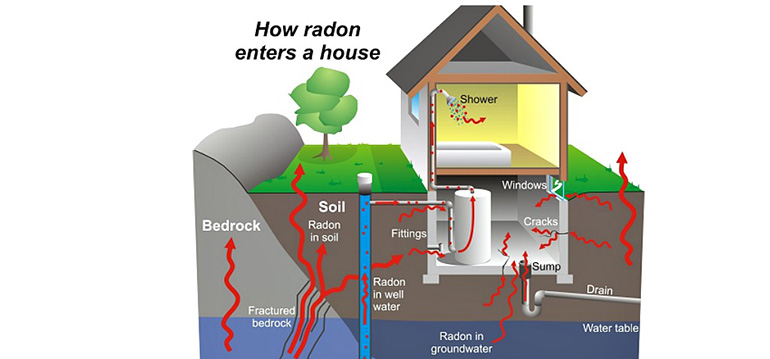The outcomes of miner research studies have actually been confirmed by speculative pet research studies, which show greater prices of lung tumors amongst rodents exposed to high radon degrees. Radon is the second leading reason for lung cancer after smoking. You raise your danger of developing lung cancer if you smoke and live in a house with high radon levels. Having your house checked is the just efficient means to figure out whether you and your family members are at threat of high radon direct exposure.
As an anemic, odor free, tasteless gas, radon is undetected by human senses. Radon poisoning does not trigger the same dangerous, apparent signs and symptoms as various other contaminated materials. Instead, radon direct exposure can lead to the advancement of lung cancer cells. Individuals that smoke and also are exposed to radon go to a higher threat of developing lung cancer. EPA suggests doing something about it to decrease radon in residences that have a radon degree at or over 4 picocuries per liter (pCi/L) of air (a "picocurie" is a typical device for measuring the amount of radioactivity).
Cancer Prevention Devices

Although low-exposed miners experienced direct exposures equivalent to lasting house in high-radon homes, the mean cumulative exposure amongst miners is about 30-fold higher than that related to lasting residency in a common residence. Furthermore, the smoking is a considerable confounding factor in all miners' researches. The health effects of high exposure to radon in mines, where direct exposures getting to 1,000,000 Bq/m3 can be located, can be acknowledged in Paracelsus' 1530 description of a squandering disease of miners, the mala metallorum. Though at the time radon itself was not recognized to be the reason-- certainly, neither it neither radiation had even been found-- mineralogist Georg Agricola recommended ventilation of mines to prevent this hill health issues (Bergsucht). In 1879, the "wasting" was recognized as lung cancer by Herting and also Hesse in their investigation of miners from Schneeberg, Germany.
- Another finding of the BEIR VI research was that miners subjected at fairly reduced radon focus had a larger percent increase in lung cancer cells fatality price per WLM than miners exposed at higher radon concentrations.
- Because radon is a product of the contaminated decay of uranium, below ground uranium mines might have high focus of radon.
- For image, the exposure-age-concentration design is summed up in Table 1.
- In order to sum up the risks seen in the research studies of radon-exposed miners and also to make forecasts about the most likely risks in various other radon-exposed populations, the BEIR VI committee established a number of designs.
Radon was very first thought as the main root cause of these cancers in radon-exposed miners in the twentieth century, and its causal duty in lung cancer became securely developed in the 1950s. Additional historical details are presented elsewhere (BEIR IV 1988). Research studies of underground miners subjected occupationally to radon, generally at high concentrations, have actually continually shown a raised Visit this page danger of lung cancer for both non-smokers as well as smokers. Based primarily on this evidence, radon was identified as a human health hazard by the International Firm for Research Study on Cancer Cells in 1988 (IARC 1988).
From the proof presented above, it is clear that exposure to radon is a well established root cause of lung cancer in the general populace. In any certain country, the proportion of lung cancers cells taking place every year which are radon-induced will be determined mainly by the interior radon focus because country.
